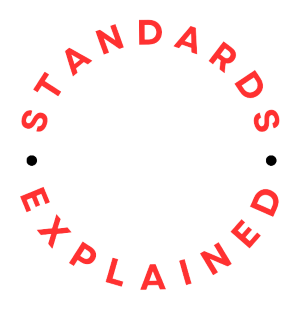ISO 26000:2010 Guidance on social responsibility is an international standard that provides guidance on social responsibility. It applies to all types of organizations, regardless of their size or location, and covers:
- concepts, terms and definitions related to social responsibility;
- background, trends and characteristics of social responsibility;
- principles and practices relating to social responsibility;
- core subjects and issues of social responsibility;
- integrating, implementing and promoting socially responsible behaviour throughout the organization and, through its policies and practices, within its sphere of influence;
- identifying and engaging with stakeholders;
- communicating commitments, performance and other information related to social responsibility.
What is its purpose?
ISO 26000 is intended to assist organizations in contributing to sustainable development and to encourage them to go beyond legal compliance, recognizing that compliance with law is a fundamental duty of any organization and an essential part of their social responsibility. It is intended to promote common understanding in the field of social responsibility and to complement other instruments and initiatives for social responsibility, not to replace them.
In applying the standard, it is advisable that the organization takes into consideration societal, environmental, legal, cultural, political, and organizational diversity, as well as differences in economic conditions, while being consistent with international norms of behaviour.
ISO 26000 is not a management system standard and, therefore, is not appropriate for certification purposes or regulatory use.
The standard was last reviewed and confirmed in 2021; therefore, this version remains current.
What does it cover?
| Introduction |
| 1 Scope |
| 2 Terms and definitions |
| 3 Understanding social responsibility |
| 3.1 The social responsibility of organizations: Historical background |
| 3.2 Recent trends in social responsibility |
| 3.3 Characteristics of social responsibility |
| 3.4 The state and social responsibility |
| 4 Principles of social responsibility |
| 4.1 General |
| 4.2 Accountability |
| 4.3 Transparency |
| 4.4 Ethical behaviour |
| 4.5 Respect for stakeholder interests |
| 4.6 Respect for the rule of law |
| 4.7 Respect for international norms of behaviour |
| 4.8 Respect for human rights |
| 5 Recognizing social responsibility and engaging stakeholders |
| 5.1 General |
| 5.2 Recognizing social responsibility |
| 5.3 Stakeholder identification and engagement |
| 6 Guidance on social responsibility core subjects |
| 6.1 General |
| 6.2 Organizational governance |
| 6.3 Human rights |
| 6.4 Labour practices |
| 6.5 The environment |
| 6.6 Fair operating practices |
| 6.7 Consumer issues |
| 6.8 Community involvement and development |
| 7 Guidance on integrating social responsibility throughout an organization |
| 7.1 General |
| 7.2 The relationship of an organization’s characteristics to social responsibility |
| 7.3 Understanding the social responsibility of an organization |
| 7.4 Practices for integrating social responsibility throughout an organization |
| 7.5 Communication on social responsibility |
| 7.6 Enhancing credibility regarding social responsibility |
| 7.7 Reviewing and improving an organization’s actions and practices related to social responsibility |
| 7.8 Voluntary initiatives for social responsibility |
| Annex A Examples of voluntary initiatives and tools for social responsibility |
| Annex B Abbreviated terms |
Applying ISO 26000
Applying social responsibility in an organization in accordance with ISO 26000 involves several steps.
1. Understand ISO 26000
Familiarize yourself and your organization with the ISO 26000 standard. Understand its principles, core subjects, and guidance on integrating social responsibility into the organization’s practices.
2. Commitment and Leadership
Top management commitment is crucial. Leaders should endorse and actively support social responsibility initiatives. Establish a policy statement that reflects the organization’s commitment to social responsibility.
3. Stakeholder Engagement
Identify and engage with key stakeholders such as employees, customers, suppliers, communities, and others. Understand their expectations and concerns related to social responsibility and integrate their input into decision-making processes.
4. Context Analysis
Conduct a thorough analysis of the organization’s internal and external context. Identify social, environmental, and economic issues that are relevant to the organization and its stakeholders.
5. Define Social Responsibility Objectives
Based on the context analysis and stakeholder engagement, establish specific, measurable, achievable, relevant, and time-bound (SMART) social responsibility objectives. These objectives should align with the organization’s overall goals.
6. Integration into Organizational Policies and Processes
Integrate social responsibility considerations into existing policies, procedures, and processes. This may include areas such as human resources, procurement, environmental management, and community engagement.
7. Training and Capacity Building
Provide training to employees to enhance their understanding of social responsibility and their role in its implementation. Build the necessary skills and knowledge within the organization.
8. Communication and Reporting
Develop a communication strategy to inform stakeholders about the organization’s social responsibility initiatives. Regularly report on the organization’s performance against its social responsibility objectives.
9. Monitoring and Measurement
Establish a system for monitoring and measuring the organization’s performance in relation to social responsibility. This includes tracking progress against objectives and assessing the effectiveness of implemented initiatives.
10. Continual Improvement
Implement a continual improvement process. Regularly review and update social responsibility practices based on feedback, changing circumstances, and evolving stakeholder expectations.
11. Review and Assurance
Periodically review the organization’s social responsibility performance to ensure ongoing relevance and effectiveness. Consider obtaining external assurance or certification to demonstrate commitment and transparency.
A few, final words…
Remember, the implementation of social responsibility is an ongoing process, and organizations should be adaptable to changes in their operating environment and stakeholder expectations. Regularly revisiting and refining these steps will contribute to the sustained success of the organization’s social responsibility efforts.
ISO 26000 can be purchased through the ISO.org website.














Comments (0)